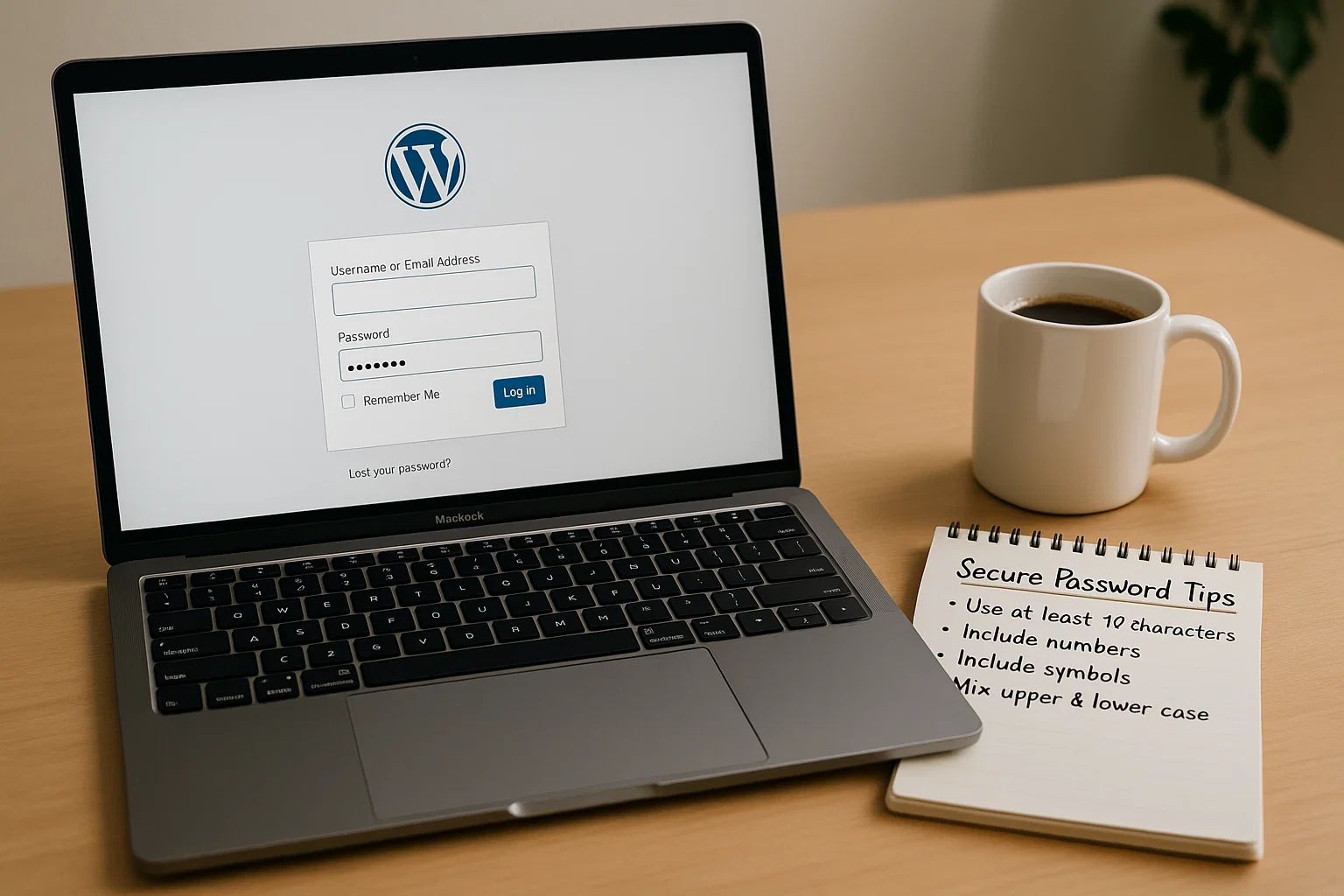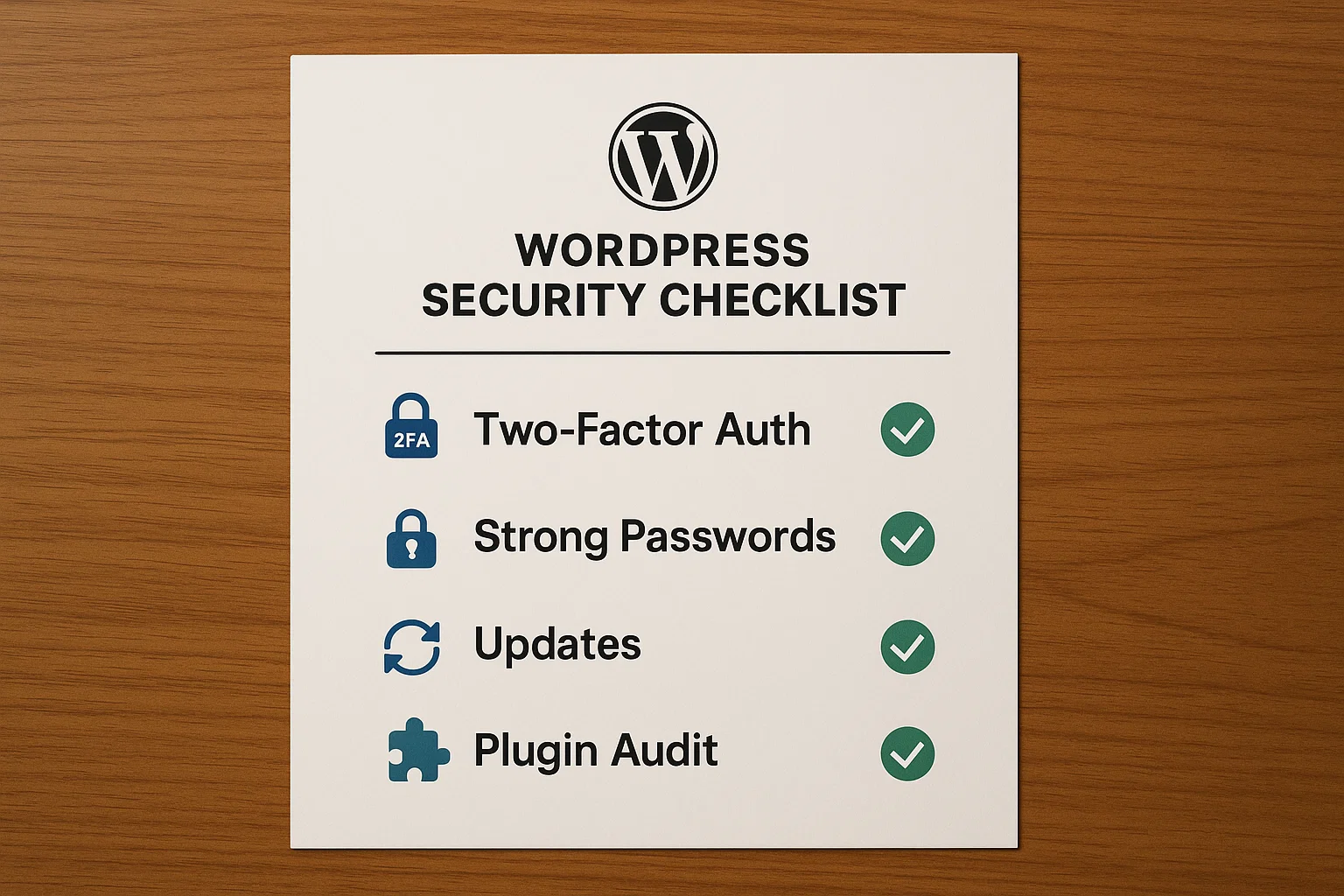
What “WordPress Admin Password Default” actually means
People often search for a default admin password because they expect a brand-new CMS to ship with something obvious like admin:admin or password123. But WordPress does not ship with a universal default admin password when you install WordPress you choose an admin username and password during setup, or your host sets it for you and emails credentials. If you didn’t receive those credentials, your host’s control panel or the installer used may show them.
Important: WordPress stores passwords as hashed values, not plain text so you cannot read someone’s password directly from the database. That’s by design, and it protects users if the database leaks.
Why you usually can’t “find” the admin password
- WordPress uses secure hashing (passwords are salted and hashed). The stored
user_passvalue inwp_usersis not reversible. - Modern PHP password APIs and WordPress salt keys make reversing impractical.
So instead of trying to recover the old password, the standard approach is to reset it.
Before you reset check the easy places
- Password manager: Look in your browser or any password manager (1Password, Bitwarden, LastPass).
- Welcome email from host: Many hosts email installer credentials; search your mailbox for “WordPress”, “admin”, or your domain.
- Control panel installer: If you used Softaculous, Installatron or similar, open it it often lists the admin username and lets you reset the password.
- Ask your team: If someone else set up the site, they may still have the credentials.
If none of the above works, proceed to the reset methods.
Safe methods to reset WordPress admin password
1) Reset via “Lost your password” (recommended)
- Go to
https://your-site.com/wp-login.php→ click Lost your password? - Enter the admin email or username. WordPress sends a reset link to the account email.
- If the email doesn’t arrive, check spam or ensure your site can send mail (SMTP issues are common). Use an SMTP plugin or your host’s mail logs to debug.
Why this is best: it uses built-in logic, leaves no temporary files, and rehashes the password using WordPress’s secure hashing.
2) Reset via hosting control panel (phpMyAdmin)
Use this if you can’t access the admin email. Be careful editing the DB can break things if done wrong.
Steps:
- Login to your hosting control panel (cPanel, Plesk, etc.) and open phpMyAdmin.
- Open your WordPress database and find the
wp_userstable (your prefix may differ). - Locate the admin user row. Edit the
user_passfield. - In the function dropdown choose
MD5and enter a new password (e.g.,MyNewP@ssw0rd123) then save.
Notes:
- Historically WordPress accepted MD5 entries and then rehashed them on first login; modern installs will still work but prefer other methods (WP-CLI).
- After login, immediately change the password again from the user profile to ensure WordPress hashes it with current standards.
3) Reset via WP-CLI (if you have shell access)
If you have SSH and WP-CLI installed, this is the safest quick command:
Or to set by ID:
WP-CLI updates the password correctly and securely.
4) Temporary admin via functions.php (if other methods fail)
Add a temporary admin account by inserting code into your active theme’s functions.php. Do this only briefly remove the code after use.
After creating the account and logging in, delete that code immediately and remove the temporary admin user.
Recovering access when you cannot use the email (host lockouts)
If your host restricts access (suspended email, locked control panel), contact the host’s support. Provide proof of domain ownership. Good hosts will help you regain access; shady hosts may not consider migrating to a reputable provider.
Hardening your admin account (must-do steps after recovery)
Once you regain access, don’t stop there make the admin account secure:
- Use a strong password: long (12+ characters) with mixed types. Consider using a passphrase.
- Change default username: if your admin username is
admin, create a new admin user with a unique username and delete the oldadminaccount. - Enable Two-Factor Authentication (2FA): use plugins like Wordfence, Duo, or Two Factor Authentication to add an extra layer.
- Limit login attempts: install a plugin to block brute-force attempts (Limit Login Attempts Reloaded, Loginizer).
- Rename the login page: change
/wp-login.phpto a custom slug to reduce automated attacks (use WPS Hide Login or similar). - Use strong salts and keys in
wp-config.phpregenerate them at https://api.wordpress.org/secret-key/1.1/salt/ and paste into your config. - Keep everything updated: core, themes, plugins. Updates often fix security holes.
- Install a security plugin and enable firewall rules (Wordfence, Sucuri, iThemes Security).
- Backup regularly: use a reliable backup plugin or host backups; store copies offsite.
- Audit admin users: remove unused accounts and give minimal roles needed.
Extra tips & common pitfalls
- Don’t use MD5 in production forever. If you set an MD5 hash in the DB, log in once and update the password via the dashboard to ensure WordPress rehashes it properly.
- Email not arriving? Use an SMTP plugin (WP Mail SMTP) or check your host’s mail queue. Often WordPress cannot send mail because PHP mail is disabled.
- Locked out after plugin change? Rename the plugin folder via FTP to disable it and regain access.
- Two admins? For safety, keep at least two admin users (trusted people) so you have a recovery path if one user’s email is lost but don’t keep many admins; use the principle of least privilege.
- Record credentials securely: Use a password manager and store site recovery steps in a secure notes section.
Quick command & code cheat-sheet
WP-CLI reset
phpMyAdmin (SQL) to change password directly
functions.php temporary admin remove after use (see earlier code block).
One-page checklist (copyable)
- Use “Lost your password?” first
- Check password manager & hosting emails
- Reset via WP-CLI or phpMyAdmin if needed
- Create new admin user and delete default
admin - Enable 2FA and limit login attempts
- Regenerate salts in
wp-config.php - Update all plugins/themes/core
- Schedule regular backups

Final notes and next steps
There isn’t a single WordPress admin password default to look up your recovery path depends on what access you still have (email, hosting control panel, SSH). If you follow the methods in this guide you’ll regain control and then be able to lock down your site so it doesn’t happen again.
If you prefer a one-click report to hand to your host or developer, copy the checklist above into an email and include proof of domain ownership. And if you want quick, safe phrasing to paste into support tickets, here’s a short template:
“I can’t access the WordPress admin for
example.com. I’ve lost the admin password and the admin email is inaccessible. Please verify my domain ownership and help reset the admin credentials or provide temporary access to phpMyAdmin/SSH.”
Want a tidy checklist or printable PDF version of this guide? I can produce one formatted for your team. Also, if you’d like a short plugin recommendation list and exact WP-CLI commands tailored to your hosting, tell me your host and I’ll tailor the steps.
(TL;DR)
- There is no universal “default” WordPress admin password set by WordPress itself.
- You can’t retrieve the current password from the database in plain text (it’s hashed).
- Reset it via the “Lost your password” email, hosting control panel tools (phpMyAdmin, WP-CLI), or by adding a temporary admin via functions.php.
- After access, secure your site: strong password, rename admin user, enable 2FA, limit logins, and keep backups.

Alex WebPro, your guide to web mastery. Expert tips on WordPress, SEO, monetization, and the best in design trends and themes.